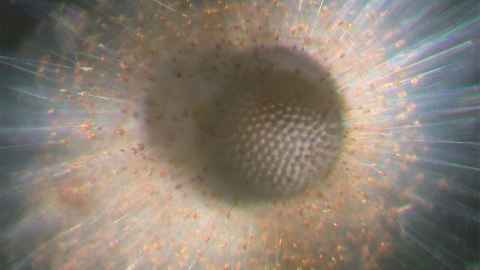Dip in biodiversity at equator may pre-date fossil fuel industrial age
26 May 2020
New research shows that instead of marine biodiversity being highest at the equator as widely expected, it actually dips there.

The study used data from deep-sea sediment cores containing shells of microscopic marine plankton called foraminifera to date how many species existed in different locations of the ocean going back thousands of years.
Foraminifera live in the surface ocean waters that cover over two-thirds of the Earth's surface and are an indicator of wider ocean biodiversity. This huge habitat is home to phytoplankton which plays a key role in global oxygen production and forms the basis of the marine food chain that feeds all marine animals including corals and fisheries that are increasingly under threat from climate change.
Analysing microscopic foraminifera in sediment cores through rich fossil records is a bit like using tree rings to date trees, says study co-author Professor Mark Costello from the University’s School of Environment.
“Our method is very similar although not quite as accurate, but we were able to go back in time to compare how many species existed at different latitudes during and since the last glacial ice-age when high latitudes were covered in ice.”
While the equatorial drop in biodiversity could be expected because the equator is the region with most solar radiation and extreme heatwaves, the decline may be amplified by recent anthropogenic warming, or climate change, during the past 150 years of burning fossil fuels.
The research not only described global biodiversity patterns from the pre-industrial period and last ice age and but used these to predict future global marine biodiversity.
By the end of the 21st century, tropical diversity may decrease to levels not seen for millions of years if our future aligns with the "business-as-usual" CO2 emissions, Professor Costello says.
“Whether our predictions are going to prove to be correct is the subject of further research but this publicly available fossil record provides the most geographically comprehensive measure of species diversity over thousands of years.
“This latest work confirms an earlier prediction indicating that the dip in all kinds of marine species at the equator is related to ocean temperature and will only get worse at the current rate of climate change.”
The research is published in the Proceedings of the National Academy of Sciences
Media contact
Anne Beston | Media adviser
DDI 09 923 3258
Mob 021 970 089
Email a.beston@auckland.ac.nz